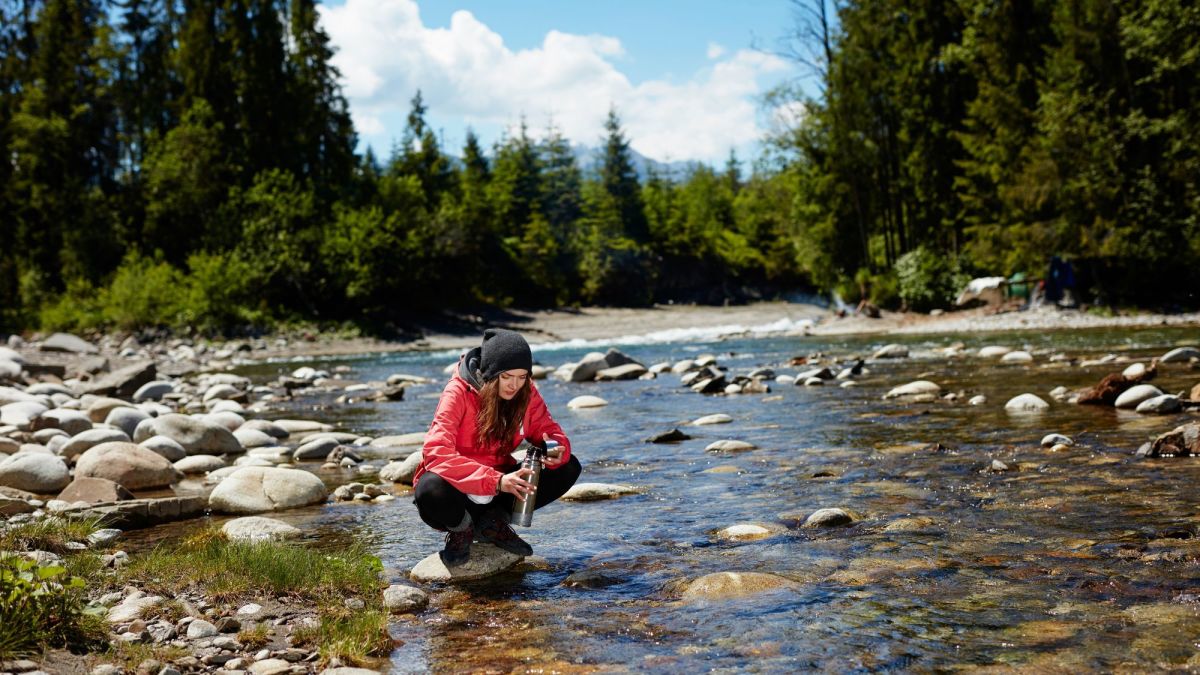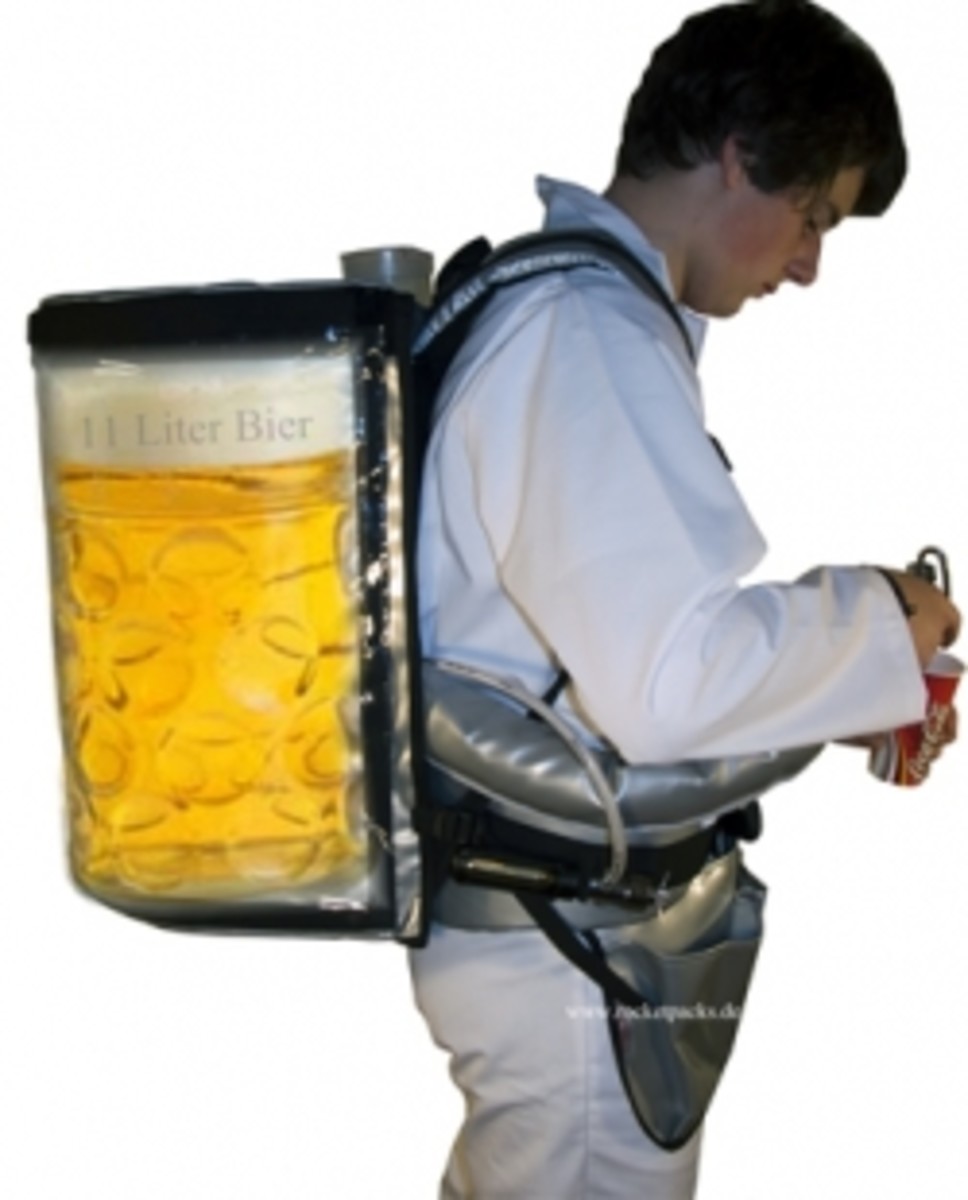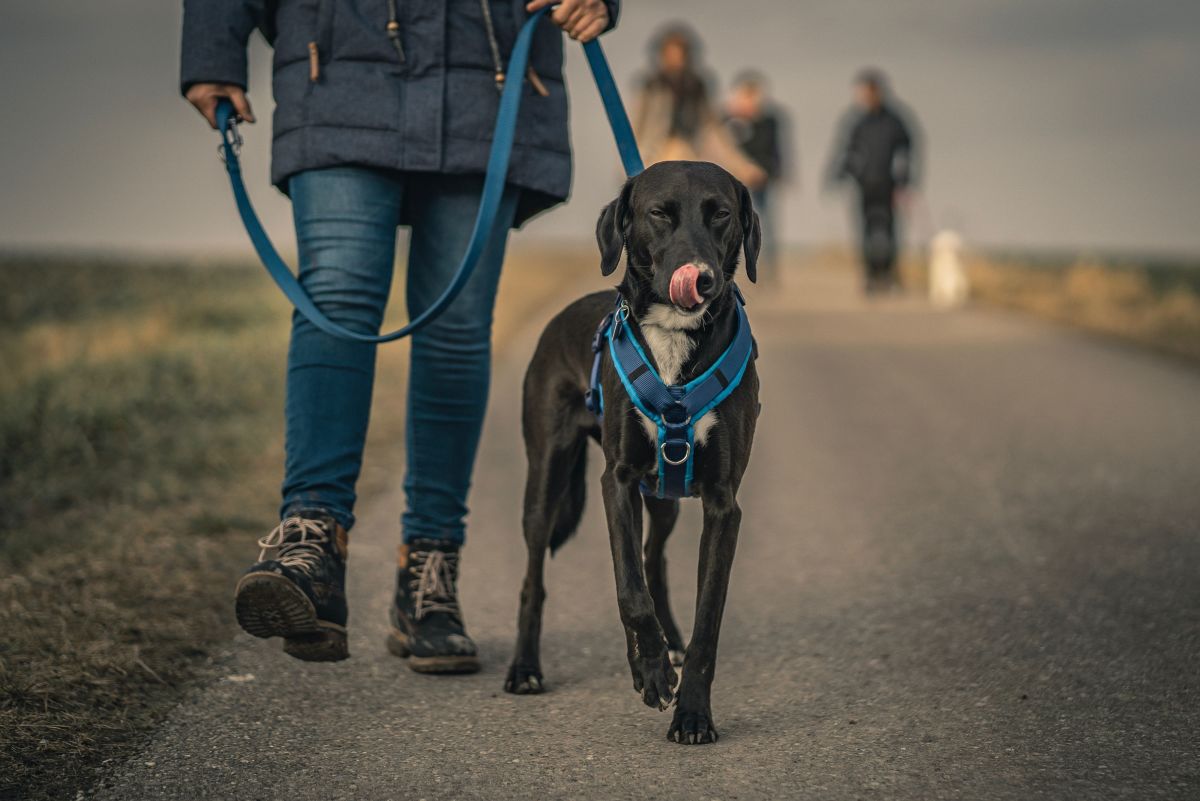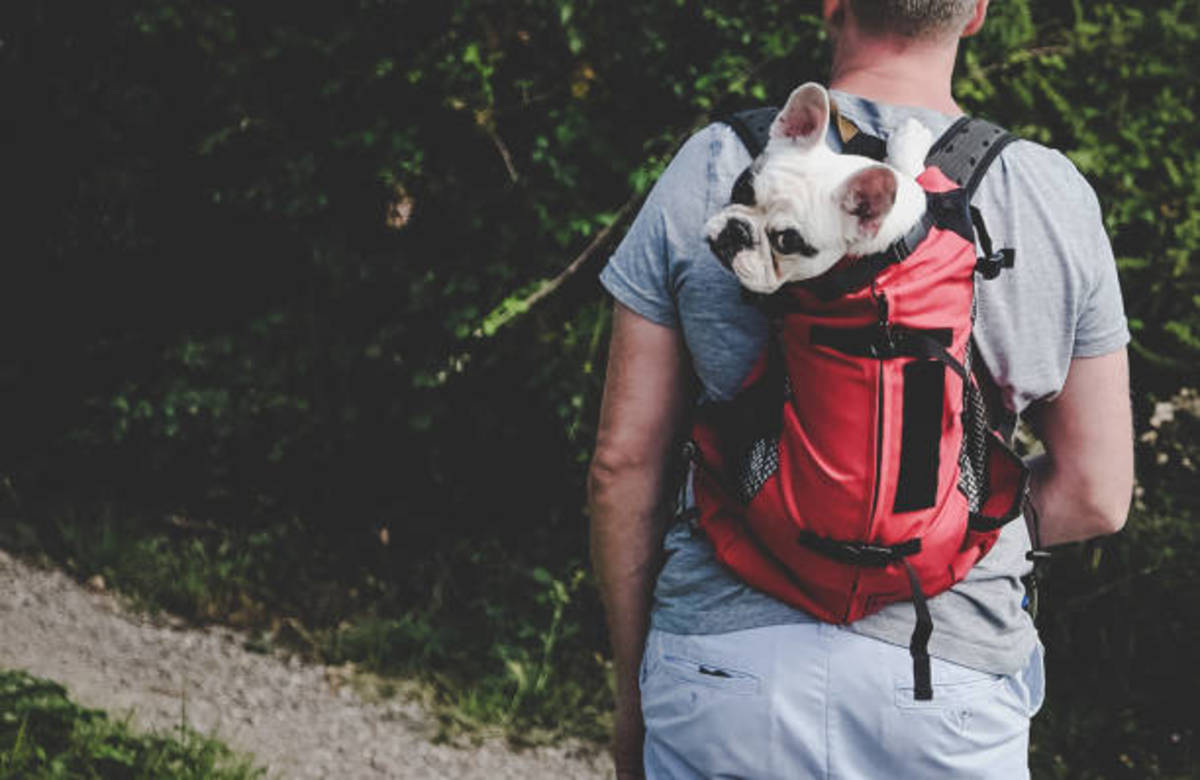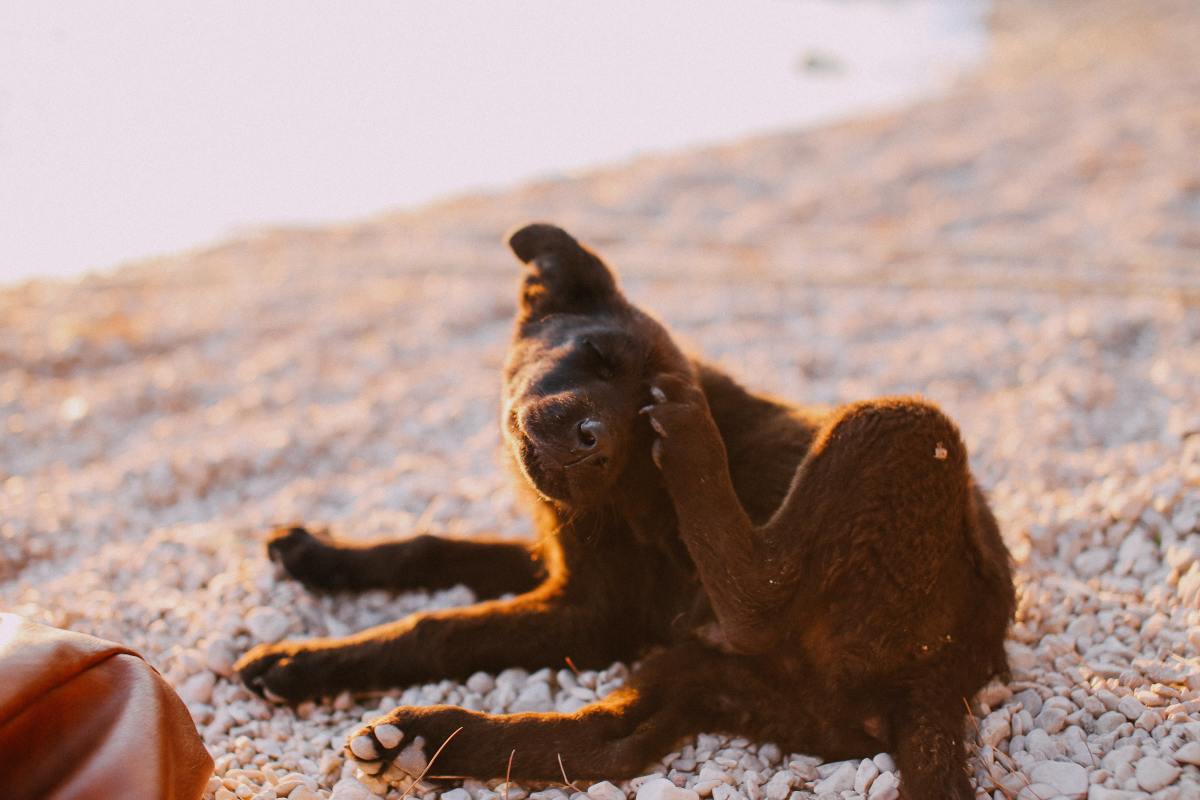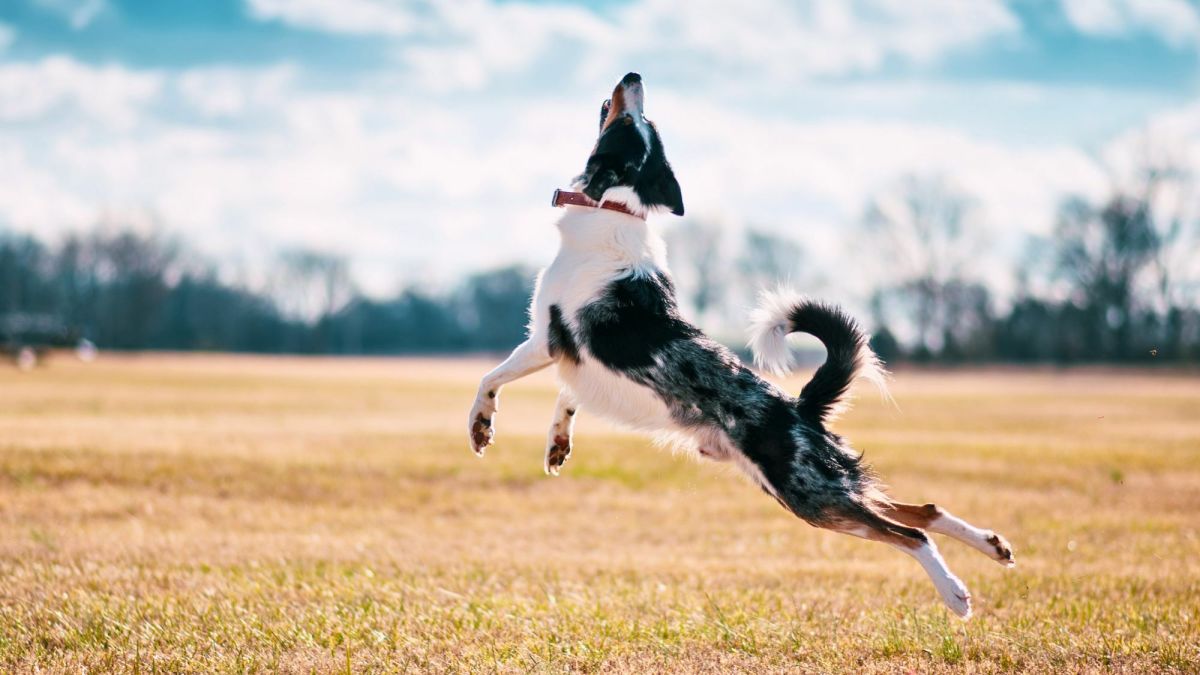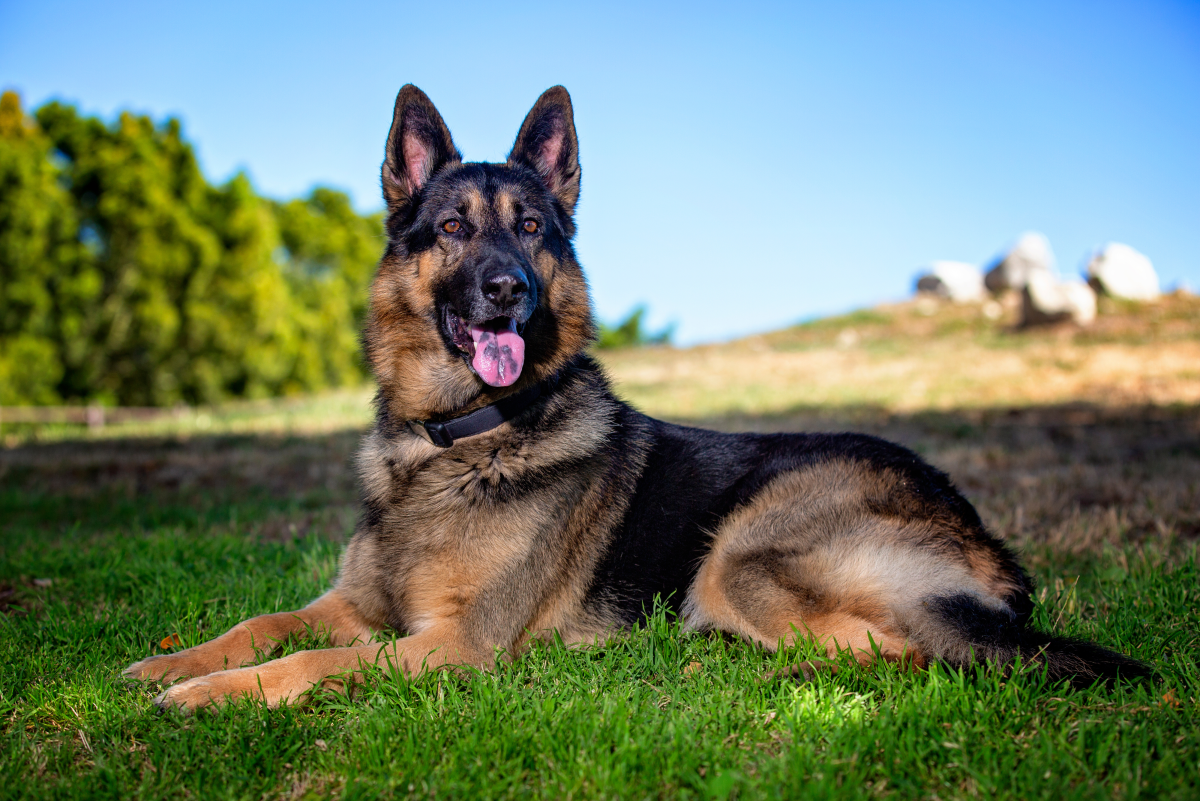Essential Safety Gear for Hiking and Camping with Your Dog
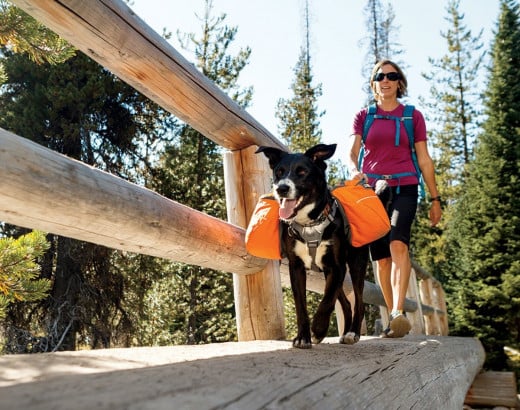
Backpacking with your furry best friend is a blast. He may not enjoy the views in the same way you do, but he certainly enjoys being out in nature with you. Hiking backpacks for dogs allow you and your four legged friend the opportunity to enjoy nature together, while he carries his own supplies for the excursion.
You are sure to delight in the ultimate bonding experience with your dog, that is unless injury occurs to either your dog or his backpack. First aid tools, top quality gear and planning tips will make for a safe and invigorating excursion for both you and your best friend.
Dog Backpack Basics
Proper fitting of the backpack is essential to your dog’s health on a long hike. Improperly configured harnesses can wear sores and create hot spots, making it impossible for your dog to carry his load. Fit the backpack harness while the saddlebags are removed. You should be able to fit two fingers under each of the harness straps.
The dog pack needs to stay evenly loaded on both sides. Every pack will begin to list to one side if improperly weighted, causing chaffing and unnecessary back strain.
The weight of the backpack should not protrude on the spine beyond the rib cage. The majority of its weight should be placed on and around the dog’s shoulders.
In hot weather, with removable saddle bags, the harness can be wet down to cool the dog as the harness moisture evaporates.
5 To Do's Before You Head Out On the Trail
- Gradually accustom your dog to his new pack. Begin by taking walks with it unloaded, and slowly increase the load over the course of two-three weeks depending on your dog's condition.
- Your dog should never carry more than 25% of his body weight on his back. If you plan for him to carry his own food, keep in mind that his energy requirements will be increased on a long mountain hike. Plan on bringing at least 50% more than you would normally feed him over the same time frame at home. High energy treats given during rest and water breaks can keep him going strong.
- Plan hikes over soft terrain for your dog; choose the leafy path or the one covered with pine needles. Avoid paths with narrow ledges and rocky surfaces. Your dog will not be aware of how much broader he is with a backpack on his back. The expanded girth can lead to bumps that could tear open his pack or worse knock him off balance on a narrow ledge.
- If you will be hiking over rocky terrain or in the snow, consider bringing along dog booties to protect your dogs feet. Many dogs dislike wearing these boots, but sore feet and open wounds can change your dogs mind about the value of a pair of dog boots!
- Trim you dog’s nails before you leave so they won’t puncture your tent when you bring him in at night.
#1 First Aid Precaution for Dogs in The Woods
Bring along a small, lightweight tick remover (which will remove the head as well). Tick born illness such as Lyme’s disease, Rocky Mountain Spotted Fever and tick paralysis can be very serious when you find you need to carry your friend, pack and all, out of the wilderness.
Check for ticks, especially between toes and pads regularly while you are on breaks. If you will be hiking for several days or more, talk with your veterinarian about bringing along a general antibiotic that effectively treats tick paralysis and Lyme’s disease.
First Aid You Can Share With Your Dog While Camping
These first aid items should always be in your pack, and are safe for both you and your dog to use.
- Be sure to have iodine or colloidal silver with you as well as Tough Seal Liquid bandage or its equivalent for scrapes and cuts. (colloidal silver is a painless and effective anti-bacterial and anti-fungal solution frequently used to treat burn victims). Ointments like Neosporin will make the liquid bandage difficult to adhere. We find that colloidal sliver reduces healing time for scratches and hot spots by several days.
- Immodium A-D and Pepto-Bismal tablets for upset stomachs; dogs can be made ill by the same bacteria that humans from untreated water.
- Benedryl for allergic reactions to bites and stings
- 4" Square Gauze Pads and Self Adhesive Bandage Wraps
- Styptic powder to stop bleeding
The hands free lead for all situations
Dog Backpacking Safety Essentials
Most dog friendly trails require dogs be on a six foot or shorter leash. Choose one with snaps at both ends so you can just attach your dog’s backpack harness to your backpack or one of your belt loops.
The Snapleash allows you to attach your dog to your pack or to tether him to a tree or post when you may want to go somewhere he cannot or should not follow.
Consider a LED collar for keeping track of your dog after dark. A full collar LED is easier to spot than an LED charm hanging from the dog’s collar.
Be sure to have your dog's name and your contact information on a tag on the collar. If you get separated from each other, the pack itself could be pulled off in the woods, leaving no identifying information.
Select a brightly colored dog backpack to aid you in locating him should you get separated.
Keep your dog on lead around other hikers, bikers and yield the trail to them as they pass by.
Offer your dog water in a collapsible water bowl whenever you stop for water. Try to limit the amount of pond or stream water he drinks; dogs can pick up many of the same water born parasites that people can.
Depending on the size of your dog, plan on him consuming 1 quart of water for every 3 miles hiked. You can use the same bowl for food and water. Your dog will like the taste of his water, and it will help keep it clean and avoid attracting nuisance animals, like bears.
Remove the pack or detachable saddlebags when on break. Check for any rubbing or wearing patterns in the fur regularly, and readjust harness if you see fuzzy fur or balding patches.
Bring along biodegradable poop bags. Dog poop should be buried at least 200 feet away from trails, camp sites, streams and other water sources.
If your dog has a short coat and temperatures will be dropping below the 50 degrees, plan on your dog sharing your sleeping bag with you. A lightweight two person bag will help you both share body warmth.
The Best Dog Backpack for Camping and Hiking

Our Pick: The Ruffwear Palisades Dog Backpack
The Palisades dog pack is Ruffwear's top of the line dog backpack, and it is loaded with features. Here's why we like it so much; its only drawback is the price, at a stiff $129.99. However, a well constructed backpack can last years, while a poorly made one may not last one hike.
- The pack includes two collapsible water bladders that each hold a quart of water. The bladders function to cool the dog in warm weather and protect the dog from uncomfortable gear stowed in the compartments.
- Features a strong handle to lift the dog over obstacles
- The saddlebags are removable for quick comfort on breaks and for crossing streams.
- The Web Master Harness can be used separately has a harness.
- The weight forward design keeps weight towards the dog's shoulders and off of the loins.
To read other backpack reviews and comparisons and decide for yourself visit: Find Your Ideal Dog Backpack | 5 Best Dog Backpacks Reviewed
If cost is a concern, Ruffwear makes a scaled down version, the Approach Pack. It does not have the built in water bladders, but is made of tough nylon and has a weight forward design.





